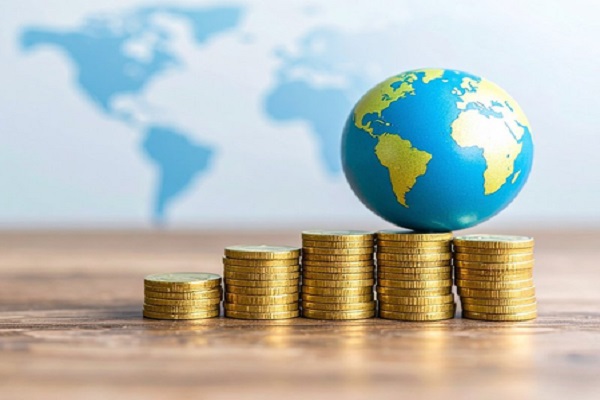RBI`s study : Lens on fiscal reforms amid likely fiscal slippage in FY25 by Emkay Global Financial Services

The RBI’s annual study of state finances focuses on fiscal reforms to improve fiscal outcomes and efficiency, while also assessing their performance over FY23-FY25BE. It notes the rising fiscal deficit trajectory with pressure emerging from the freebie push and poor financials of discoms. Another key finding is the disparity between states’ BE and actuals, especially for capex. The peak capex multiplier estimated at 3.8x (vs 1.4x for revex), highlights the need for states to focus on capex enhancement and revex moderation. In this context, 7MFY25 financials are concerning, with subsidy-led revex growth, and a decline in capex amid anemic revenue. We estimate that states will slip ~0.2% vs FY25BE FD/GDP, despite capex being lower by ~0.5% of GDP, whilespending pressure will lead to a borrowing surge in Q4FY25.
RBI highlights rising risks from subsidy push and discom debt
The RBI’s annual study of state finances focuses on fiscal reforms undertaken by states over the past two decades with the impact on their fiscal position. Additionally, it also assesses states’ fiscal performance over FY23-FY25BE, noting that while states’ FD/GDP trajectory was below 3% until FY24P, it increased to 2.9% in FY24P and has risen further to 3.2% for FY25BE (Exh 1). Further, as highlighted in our analysis of state finances (See: The widening cracks in state finances), the study also acknowledges the recent subsidy and freebie surge across states (9 states spending 1.1% of GDP on average in FY25 on cash transfers to women; Exh 2) as posing risks to the trend of fiscal consolidation and also for capex. Another potential source of risk is the poor financial health of discoms, whose total outstanding debt has risen to Rs6.8trn (2.5% of GDP), with large variance across states (Exh 4). With electricity subsidies on the rise, the impact on states’ finances would be considerable if they had to take over the discom losses (aggregate discom losses are equivalent to 35% of states’ RD; Exh 5).
Focus on long-term reforms to improve fiscal outcomes and efficiency
The report focuses on long-term reforms undertaken from the early 2000s, which helped reduce states’ FD/GDP from an average of 4.3% in FY99-04 to 2.7% in FY05-24, with debt/GDP also declining (FY04: 31.8%; FY24: 28.5%; Exh 5 and 6). Further reforms have focused on revenue enhancement and expenditure streamlining. Some of the reforms (GST, shift to NPS from OPS, Direct Benefit Transfers, Single Nodal Agency for CSS schemes) have been implemented at the national level, while several states have also put specific improvements in place (Exh 7). RBI’s analysis also shows that GST helped reduce disparities between states’ own tax revenue (OTR)/GDP, especially for states which had lower initial ratios. This is a welcome trend, but more work is needed, especially with declining grants from the Centre (Exh 8). In this context, the Supreme Court’s decision to allow states to impose taxes and royalties on minerals will significantly benefit resource-rich states (AP, CG, JH, OD, MP, KA etc), with JH and KA having already proposed taxes and levies based on this order. The study also recommends a time-bound glide path for states’ FD/GDP, similar to the Centre’s, to bring about durable and sustainable fiscal consolidation and debt reduction.
RBI highlights wide disparity between states’ BE and actuals, especially for capex…
One of the most pressing issues around states’ finances has been the lack of correspondence between budget estimates and actual numbers. The study corroborates this by using the PEFA framework (Exh 9) to evaluate budgets of 20 states – it finds that only 8 states achieved ‘A’ or ‘B’ scores for revenue receipts pre-Covid, even as revex estimates have been more accurate (15 states with ‘A’ or ‘B’ scores; Exh 10 and 11). Crucially, states’ compromising on capex during crises or in the face of shortfalls is borne out by the data – only 9 states had ‘A’ or ‘B’ grades for capex pre-Covid, and this falls to just 3 post-Covid (Exh 12).
…with growth implications as capex suffers in FY25E, while revex surges
The RBI asserts that states’ nominal capex has surged after the introduction of the Centre’s capex loan scheme. While this is true, states’ capex/GDP has been stagnant at ~2.1% since FY21 (albeit rising to 2.3% for FY24P), indicating that states have yet to ramp up capex relative to economic growth. With the RBI estimating states’ peak capex multiplier at ~3.8x (vs 1.4x for revex ex-interest), it is essential that states focus on improving capex while moderating revex to boost medium-term growth. In this context, FY25BE is an unwelcome reversal of the trend – revex/GDP is budgeted to rise to 13.5% (FY24P: 12.5%) after having declined from the FY21 peak of 13.9%, with further upward pressure from subsidies/freebies. Capex, on the other hand, while budgeted to rise to 2.5% of GDP has severely lagged so far, and will likely undershoot BE by ~0.4-0.5% of GDP.
States’ FY25 fiscal position looks artificially healthy; muted revenue and higher spending pressure to lead to fiscal slippage of ~0.2% of GDP
* States in an artificially healthy fiscal position in 7MFY25: The RBI also assessed states’ fiscal performance for 7MFY25, which shows that the fiscal position is comfortable so far, albeit on account of depressed spending, even as revenue growth is soft.
* Overall revenue growth is weak: Revenue growth has been muted thus far (9% YoY vs 20% FY25BE), with all revenue heads (ex-devolution) seeing much slower growth than budgeted. This is due to slower economic activity and the states’ optimistic revenue estimates; the required growth rates for the rest of FY25 are quite high. Devolution has been healthy due to the Centre frontloading its tax transfers, and growth will thus moderate for the rest of the year.
* Revex growth has been robust… On the expenditure front, states’ revex is growing at a slower pace than budgeted (15% YoY vs 19% FY25BE). However, subsidy spending has increased 30% YoY (vs 26% FY25BE), reflecting the surge in populist and freebie announcements, which will keep revex elevated.
* …while capex is lagging, albeit picking up: On the other hand, capex for 7MFY25 has seen negative growth (-5% YoY vs 20% FY25BE). A high base effect and the general election are largely to blame here with capex now showing signs of picking up (~17% MoM growth in Oct-24). Nevertheless, even with an imminent recovery, we estimate a cut in states’ capex for FY25E vs FY24P due to subsidy-led revex pressure and the high required rate for capex (Rs1trn/month, 41% YoY). The Centre has sanctioned/disbursed Rs850bn/Rs600bn of its capex loans so far, but total FY25 disbursement is likely to be lower than last year (FY24P: Rs1.1trn).
* Fiscal deficit growth trending below FY24, but will exceed FY25BE: Slower expenditure growth so far has helped keep the fiscal deficit subdued, even with muted revenue growth. States have achieved 49% of their FY25BE FD target (vs 51% last year). However, slower revenue growth and sticky revex will lead to states’ slipping vs FY25BE by ~0.2% of GDP, despite a cut in capex.
* Q3 market borrowing lower than indicated, but issuance to spike in Q4: States' market borrowings have been ~23% lower than indicated thus far in Q3FY25 (data including auction calendar for 25-Dec; Exh 18). States have tapped the market for ~Rs2.3trn in Q3 so far vs the indicative borrowing of ~Rs3trn till 24-Dec. However, states' cash balances, as estimated via their holdings of 14-day T-Bills, had fallen to Rs1.2trn (as of 6-Dec), from Rs1.6trn in Oct-end (Exh 19), possibly due to a pick-up in spending. Assuming states borrow the indicative amount in the remaining auction in December, total Q3 borrowing would still be ~21% lower than indicated. Nevertheless, with spending on capex set to accelerate further with freebie-driven revex being sticky, borrowing should be higher from here on. Our estimate for full-year FY25 gross borrowing is ~Rs11trn, implying ~Rs4.6trn of gross borrowing in Q4 (Exh 20). This would be ~13% higher than Q4 last year, when states borrowed very heavily, with March alone seeing ~Rs2trn of gross issuance. It is quite possible that a similar pattern will be seen in FY25 as well, as the revenue crunch and spending needs bite. This would also imply that Q4FY25 borrowing would account for ~42% of full year – higher than FY24 (~40%) as well as the FY17-FY23 average (~36%).
Exhibit 1: States’ fiscal consolidation interrupted with further pressure from rising freebies

Source: RBI, Emkay Research
Exhibit 2: Multiple states have announced hefty cash transfers to women, with BR being the latest

Source: State budget documents, Emkay Research
For More Emkay Global Financial Services Ltd Disclaimer http://www.emkayglobal.com/Uploads/disclaimer.pdf & SEBI Registration number is INH00000035
























